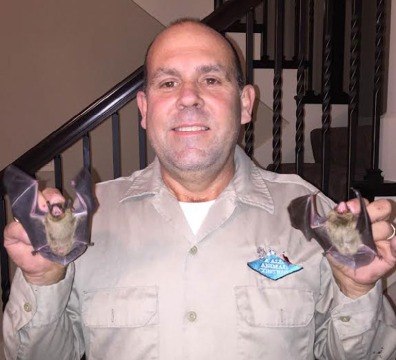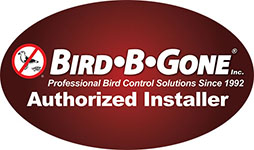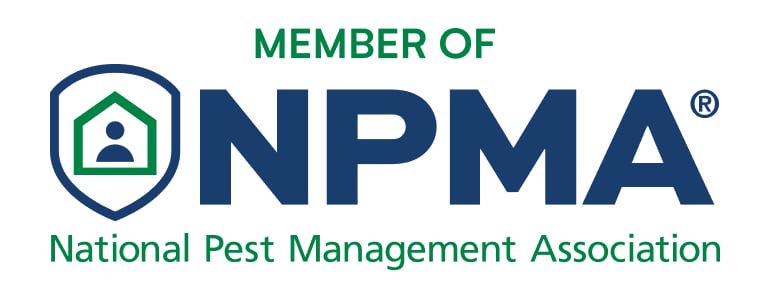
What is Wildlife Exclusion?
Exclusion means sealing off entry points for animals to your home or business in a way that stops them getting in. It is much easier than trying to exclude wildlife yourself. Sealing all entrance points to your home or business at once can make it more manageable.
AAAC Wildlife Exclusion Services provides humane removal services for wildlife that pose a threat to your business or home. Exclusion is done safely and correctly by our highly-trained staff.
If you have animals living under your house or inside the walls of your building, we can help! We will seal off all animal entry points that we find, including sealing holes in floors, cement cracks around pipes – basically anywhere an animal might find entry into your home or business
How We Conduct Wildlife Control and Exclusion Services
If you’re considering trapping and possibly getting rid of nuisance wildlife that has somehow managed to get into your home and business. Know that the problem is not solved by trapping alone. You might exterminate the first infestation, but without wildlife exclusion services, you are just waiting until the next group of critters decides to move in. These are the steps we take in order to stop the infestation cycle by using animal exclusion technologies:
Find and seal all entry points:
We first look for all the possible access points animals might use. This could be holes in floors or cement cracks that surround pipes or any other way an animal might get into your home. This also includes roof flashing, roof shingles, and soffits. These access points are then blocked off. We can also use rubber grommets, or metal grommets, to seal the hole. For other situations, wire mesh can be used as a plug to cover the holes. The third step is to cover the blocked hole with a weatherproof cover. This will protect it from wind, rain, and snow. Finally, we need to wait to see if any other openings could allow animals into your building before sealing them.
Exclude wildlife using a trap or one-way door
The main entry point that wild animals use in order to enter and exit your property or business is often identified by top pest control companies. We deliberately leave this gap open so we can properly eliminate nuisance wildlife. Once we have identified it we can use either a one-way door or a live trap.

One-way doors: For those who don’t wish to kill the animal, a one-way door can be a good choice. These are specially designed doors that allow the animals to enter but not leave. We slightly open the door, just enough to allow the animal through, but not enough for them to turn around or come out of. Then we place some bait on the other side of the hole, close it, and wait for the animal to go in. Once they head towards the bait it will be impossible for them to turn back and leave because they can’t open the door from this side!

Live traps: To use a live trap, place traps near any openings that animals could use to get in. These openings are ideal for trapping animals so that we don’t have the hassle of dealing with them. Once an animal has entered the trap, it’s caught! We might need to install a cage trap if we are trying to trap larger animals like raccoons or opossums. This trapping device is made of wire mesh and will keep the animal contained. After that, technicians from our wildlife company will remove the animal from your home.
Popular Access Points for Animal Entry
To prevent future wildlife infestations, a proper wildlife pest control service operator must check all of the most common ways that squirrels, rodents, bats, rats, mice, raccoons, birds, and other wildlife can use to access your home. AAAC Wildlife Removal does a thorough job, but here’s a quick overview of the most common access points animals use to enter your home.

Ridge Vents
Bats often enter attics through the Ridge Vent, which is a metal strip running along the roof’s edge. Ridge Guard can be used to close any openings on the vent side. After sealing the vents, we can perform a complete roof repair in order to make your home animal-proof. If you can provide us with photos of your roof, we will be able to give you a better idea of if the critters are entering your house through it.

Gable Vents
Many homes have gable vents that allow squirrels, raccoons, and other wildlife to get in. These vents can be screened or may have a small flap that is easily removed from the underside by an animal’s paw. A wire mesh can be placed to allow airflow, but prevent animals from entering these vents. We can also seal the vent flaps and repair any damaged or decayed wood that could have allowed critters in.

Dryer Vents
Dryer vents provide rodents with a way in. Rodents can often chew through dryer vents to get into your home, especially if they’re migrating between buildings in search of food or shelter. They can survive on the airflow from dryer vents. It is important to secure these areas with metal mesh and seal any cracks in the vent.
Birds enjoy dryer vents because of the warm airflow moving through them. You’ll notice an increase or decrease in your electricity bill as dryer vents are used by birds for access to their nesting space. Installation of common vent guards is the best protection.

Soffit
Raccoons and squirrels love to get inside your attic through a damaged soffit. An expert wildlife removal service will replace any rotten wood that may be allowing wildlife in and then seal the openings with closures or metal wire mesh. Your soffit is guaranteed to look new and your rodent family gone.

Fascia
Wild animals also love the fascia on your house. If you have gutters, the fascia would be under the gutter at your roof’s edge. It’s a longboard that covers up any gap between where the roof begins and where your eaves begin. We cover all gaps with metal mesh to prevent wildlife access. After that, we replace and remove any rotten wood and install a metal cover that blocks water from flowing freely.

Eaves
Raccoons love the eaves of your house and can get in through them. The edges of your roof at the edge of the house are known as eaves. Our technicians can either use metal mesh to secure the area or install special eaves guards to keep wildlife out.
The Chimney
One of the easiest ways animals can enter a house is through its chimney. If a critter is already inside, we can simply remove and replace chimney liners to get rid of the animal.
Squirrels, bats and raccoons all love to find a cozy place inside the chimney. It’s difficult for animal control firms to access this area due to fire hazards and venting. To find out the animal’s hiding place, we often use flameless heat detection cameras. We also have the option to just remove the old liner or cap and replace it.

Cracks in the foundation
Foundation cracks are a favorite entry point for rodents. We can fill foundation cracks with cement filler compounds to keep rodents out of your home. This type of repair is not only animal-proof but will also make your home appear better from the outside.

Exposed pipes
Exposed pipes are a favorite way for rodents to enter your home. You can protect your home from rodents by securing any gaps with metal mesh and covering up any pipe openings with a cap. This will stop animals from entering your home again, while still allowing for air movement.

Wildlife Damage Repair Service
Once you’ve completed wildlife exclusion, it’s time to fix any damage rodents and other pests may have done. Most wild animals will try to increase the size of their entryway to your home by digging into it with their teeth, or using their claws to scratch it. This can cause serious damage.
Our wildlife damage services are the best in the industry. Our team has the experience and expertise in carpentry and contracting to fix even the most complicated wildlife damage. Our contractors are capable of replacing damaged drywall or insulation with other building materials either on their own or in teams. The contractors have the skills to quickly and efficiently repair your home to minimize future animal damage.
Learn more about Wildlife Damage Repair

Attic Restoration
You may find your attic contaminated by urine, feces, and blood from an infestation. This can create quite the stench as well as a fit environment for mold growth. Our pest control experts will replace any contaminated insulation by fresh materials that have been treated against humidity and odor. We can also replace insulation damaged by rats, mice or squirrels with new materials that are secured to your attic floor by heavy-duty staples. Our attic repair service will restore your attics to their original glory!
Learn more about Attic Restoration
Wild Animal Pest Control
Exclusion is a humane approach to pest control. Wildlife can be humanely trapped or encouraged to leave, then unable to get back in after their openings in the home have been sealed. This article offers some insights into how professional wildlife exclusion companies can help solve problems caused by wild animals in your home. AAAC Wildlife Removal is available for expert advice on wildlife exclusion!









